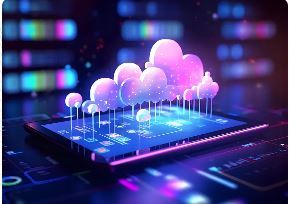#CloudOps
Explore tagged Tumblr posts
Text
🛡️ Your SLA Breaches Aren’t Random – Here’s Why They Happen
Service Level Agreements (SLAs) are the backbone of reliable IT service delivery—guaranteeing accountability, uptime, and efficiency. But when they fail, it’s not a coincidence. It’s a signal that something deeper needs your attention.
So, what’s really causing these SLA breaches?
🔍 Understand What an SLA Actually Means
SLAs set clear expectations between service providers and clients, outlining:
✅ Service scope
📊 Key performance metrics (like response/resolution times)
⚠️ Penalties for non-compliance
They’re more than documents—they’re commitments.
⚠️ Top Signs You’re Heading Toward an SLA Breach
📈 Rising response times
🆘 More escalations
😞 Unhappy customers
Don’t wait for these signs to become full-blown problems.
🧠 The Real Reasons SLAs Fail
👥 Poor resource planning (burnout, understaffing)
🔁 Inefficient processes (confusing workflows, unclear escalation paths)
💻 Outdated tech (no automation, disconnected systems)
Sound familiar?
📊 How to Identify Patterns in SLA Failures
Analyze service logs & historical data
Collect real-time customer feedback
Compare your metrics with industry benchmarks
💡 The truth is in the trends.
🛠️ Fix It Before It Breaks
✅ Optimize staffing & train your team ✅ Standardize workflows & use automation ✅ Upgrade infrastructure & deploy AI monitoring
SLA breaches aren’t random. They’re avoidable.
🚀 Strengthen Your SLA Compliance with MJB Technologies
We help you:
Reduce SLA breaches
Automate service tracking
Build trust through consistent delivery
Ready to boost your IT service reliability? 👉 Visit www.mjbtech.com
💬 Join the Conversation
Have you faced challenges with SLAs in your IT operations? Share your experience in the comments or read blog to spark a conversation!
#SLA#ServiceLevelAgreements#ITSM#ITServiceManagement#MTTR#IncidentManagement#Automation#ServiceNow#AIDrivenSolutions#MJBTechnologies#DigitalTransformation#TechSolutions#AIforIT#CustomerExperience#TechLeadership#CloudOps
0 notes
Text
Free Consultation Offer!
🚀 Answer 5 questions & receive a personalized consultation!
📊 Our experts help: ✔ Streamline your DevOps workflow ✔ Reduce cloud costs ✔ Enhance performance & security
💡 Unlock the full potential of DevOps with SDH!
0 notes
Text
WE ARE HIRING Sr. DevOps Engineer
Ready to elevate your DevOps career? We're hiring a Senior DevOps Engineer to join our dynamic team! If you're passionate about optimizing workflows, automating processes, and ensuring seamless deployments. Take your career to new heights and contribute to cutting-edge projects that shape the future of our company.
Apply now - https://bizessence.com.au/jobs/sr-devops-engineer/
Let's build the future together!

#bizessence#devopsengineer#seniordevops#automation#cloudops#docker#continousintegration#sitereliability#jobpost#jobhunt#recruitment#hiringnow#jobsearch#jobvacancy#joinourteam
0 notes
Text
Red Hat Services Interconnect and IBM Hybrid Cloud Mesh

Red Hat Services Interconnect: In order to successfully navigate the complex world of modern enterprise applications, it is necessary for there to be collaboration between various personas in order to effectively manage complexity. Through the use of applications that automate essential workflows, this contributes to the provision of continuous business support.
DevOps and CloudOps have traditionally been aligned with applications and the infrastructure upon which they are hosted. Nevertheless, the emergence of FinOps, which focuses on expense monitoring and control, was brought about by the rising costs that were caused by the diverse IT environments.
Through the use of a variety of personas in application deployment, highly complex workflows have been introduced. DevOps is typically responsible for initiating requests, which are then reviewed by teams from CloudOps, NetOps, SecOps, and FinOps. Because of these intricate workflows, application update times are prolonged, which can occasionally have an effect on business processes and the level of satisfaction experienced by customers.
Red Hat Services Interconnect: An Introduction to the Concept
The goal of Red Hat Services Interconnect (RHSI), which is based on the well-known open-source project Skupper, is to make the hybrid cloud connectivity that applications require more straightforward. It gives the DevOps teams the ability to obtain the connectivity that they require without the need for special privileges or the necessity of relying on complicated VPN connections and specific firewall rules.
A significant acceleration of the application deployment workflow is achieved as a result of this, and business users are able to respond with greater agility to the requirements of their customers. Due to the fact that it does not require any new connections to be made at the infrastructure level, new firewall rules to be added, or ports to be opened, this also contributes to the preservation of the overall CloudOps and SecOps posture.
The technology that lies beneath Red Hat Services Interconnect (RHSI) is responsible for reducing the dependence on the mechanisms of the L3 layer in order to create application tunnels. The use of a virtual private network (VPN) mechanism, such as an IPSec tunnel or any other equivalent tunneling mechanisms at the L3 level, is the primary goal of any L3-based transport. As a result of the fact that these tunnels are going to be provisioned and terminated in the routers that are going to be deployed in the application infrastructure, the NetOps and SecOps teams are going to be the ones to own and provision them.
Alternatively, Red Hat Services Interconnect (RHSI) focuses on the creation of application-level tunnels at a higher layer and employs a well-known messaging infrastructure to transport them at a layer above IP. This is an alternative to IP. A standard application layer messaging protocol that is open to the public is utilized by RHSI. Because of this, the DevOps teams are able to produce L3 tunnels for each application with significantly less reliance on the network layer, which results in a significant increase in their overall efficiency.
RHSI is also deployed as a “in-cluster gateway,” which means that the gateway is deployed as close to the applications as possible. As a result, it is able to develop a greater awareness about the application environment. This is in contrast to traditional routers, which are deployed a significant distance away from the environment in which the application is hosted, and therefore can only provide a limited application awareness.
How the IBM Hybrid Cloud Mesh contributes to the value ofRed Hat Services Interconnect?
Within the realm of the IBM Hybrid Cloud Mesh, there are two major components that serve as the foundation:
A software as a service platform that serves as the management, control, and policy plane (also known as Mesh Manager) a collection of distributed gateways that are deployed in close proximity to application workloads within the application environment (also known as Gateway).
Under the circumstances described above, RHSI fulfills the function of the gateway by putting into action the data plane that is required to transport application traffic between various locations. Outside of the data plane, there are still a great deal of complexities that need to be addressed. Some of these include the management of the gateways’ lifecycles, the rotation of certificates, the administration of policies, and, most importantly, observability.
In addition to ensuring that the DevOps users are given the ability to run faster, the Mesh Manager from IBM ensures that the CloudOps persona maintains the control that they are accustomed to experiencing, but with a significantly reduced amount of effort. Mesh Manager manages a set of distributed RHSI gateways at scale in a seamless manner.
Move forward with Hybrid Cloud Mesh and take the next step
A technology preview of Hybrid Cloud Mesh that supports the use of Red Hat Services Interconnect (RHSI) gateways and simplifies application connectivity and security across platforms, clusters, and clouds is something that IBM are very excited to present. The Red Hat Service Interconnect was introduced on May 23, 2023, during the Red Hat Summit. Its purpose is to establish connections between services, applications, and workloads that are present in hybrid environments that are required.
They are just beginning to develop enterprise hybrid multicloud automation solutions. The Hybrid Cloud Mesh transforms businesses to maximize value from modern application architecture, not just a network solution. This allows hybrid cloud adoption and transforms multicloud use. Looking forward to your company on this journey.
Read more on Govindhtech.com
#RedHat#IBMHybridCloud#CloudOps#FinOps#RedHatServices#HybridCloudMesh#technews#technology#govindhtech
0 notes
Text
Optimize Digital Ecosystems With CloudOps Services
0 notes
Text
Operational Intelligence: AI-Powered SRE Measurements and Observability

The power of Operational Intelligence! AI-driven SRE measurements and observability are revolutionizing the tech world. Leveraging advanced algorithms and machine learning, this innovative approach enhances system performance and detects anomalies in real-time. Read more: https://cloudzenix.in/
#Observability#sre#SiteReliabilityEngineering#SRE#AIinOps#PerformanceMonitoring#DevOps#AIAnalytics#DataDrivenOps#RealTimeMonitoring#InfrastructureMonitoring#DigitalTransformation#AIInnovation#TechTrends#ITOps#DataInsights#ContinuousIntegration#CloudOps#Automation
0 notes
Text
Cloudops Solution

Ever felt like your data center's a puzzle with missing pieces? Or maybe your cloud operations feel like you're navigating through fog, uncertain if you're going in the right direction. It's frustrating, right? You're aiming for seamless, but what you get feels more like a bumpy road.
0 notes
Text
Key Perspectives of Cloud Migration
Cloud migration is a complex process involving the transfer of data, applications, and IT processes from on-premises infrastructure to the cloud.Cloud migration generally refers to the process of moving digital business operations, data, applications, or other assets from on-premises infrastructure to the cloud, or from one cloud provider to another.To successfully manage cloud migration service transition, it's important to consider several key perspectives:
1. Business Perspective
Focus: Value, ROI, and strategic goals.
Business drivers: Why migrate? (e.g., cost savings, scalability, agility)
Cost optimization: TCO (Total Cost of Ownership), budgeting, and cloud pricing models.
Competitive advantage: Faster innovation, time-to-market, or entering new markets.
Risk management: Evaluate business continuity and compliance impacts.
2. Technical Perspective
Focus: Infrastructure, applications, and data architecture.
Current IT landscape: On-prem vs. cloud compatibility.
Application readiness: Monoliths vs. microservices, re-architecture needs.
Data strategy: Data migration, transformation, and governance.
Performance & scalability: Assess how cloud architecture will support workloads.
3. Security & Compliance Perspective
Focus: Protecting data and meeting regulations.
Data privacy: Encryption, access controls, and data residency.
Regulatory compliance: GDPR, HIPAA, SOC 2, etc.
Identity & access management (IAM): Secure user and service identities.
Threat modeling: New security risks introduced by cloud environments.
4. Organizational & People Perspective
Focus: Skills, change management, and roles.
Cloud skills & training: Upskilling staff for cloud operations.
Change management: Aligning teams and culture with new workflows.
Roles & responsibilities: Cloud Center of Excellence (CCoE), DevOps, etc.
Stakeholder engagement: Executive sponsorship and cross-functional collaboration.
5. Operational Perspective
Focus: Day-to-day management and governance post-migration.
Cloud operations (CloudOps): Monitoring, logging, and incident response.
Automation & CI/CD: Streamline deployment and infrastructure management.
Resource optimization: Auto-scaling, reserved instances, right-sizing.
SLAs & reliability: High availability, disaster recovery, and backups.
6. Governance & Control Perspective
Focus: Policies, budgets, and alignment with enterprise strategy.
Cloud governance: Policies for usage, cost control, and access.
Cost management tools: Tagging, budgets, and reporting.
Multi-cloud/hybrid governance: Managing across cloud environments.
Audit & compliance tracking: Visibility into cloud actions and policies.
Flycatch provides you the best cloud migration service in Saudi Arabia.Embrace a Cloud First strategy to unlock advantages such as enhanced agility, scalability, and cost-effectiveness within your business.
0 notes
Text
Master Industry-Ready Skills with ProLEAP Academy
Unlock Your Future in DevOps, Full Stack, and CloudOps
Whether you're a fresh graduate, an experienced IT professional, or looking for a career switch, ProLEAP Academy equips you with hands-on, industry-grade skills to thrive in today’s digital world.
🚀 Why Choose ProLEAP Academy?
At ProLEAP, we believe in experiential learning, providing both fundamental and advanced skill-based training in DevOps, Full Stack Development, and Cloud Operations. Our industry-oriented curriculum ensures that you’re prepared to tackle real-world challenges in the era of Industry 4.0.
📚 Our Programs
🔹 ProLEAP Foundation
Perfect for fresh graduates, final-year engineering students, or beginners in programming, this program covers: ✅ DevOps Basics – Learn Linux, Bash scripting, Git, and version control. ✅ Python & Java Essentials – Strengthen programming fundamentals. ✅ Cloud Basics – Explore AWS & Azure services and their business applications. ✅ Soft Skills & Mini Capstone Project – Develop communication, teamwork, and leadership skills.
🔹 ProLEAP Advanced
For ProLEAP Foundation graduates & IT professionals looking to upskill: ✅ Full Stack Development – Master HTML, CSS, JavaScript, React, Node.js, MongoDB and build dynamic web applications. ✅ Advanced CloudOps – Learn AWS CloudFormation, Terraform, and automation for scalable cloud management. ✅ DevOps Advanced – Gain expertise in CI/CD pipelines, OpenShift, Jenkins, and Ansible. ✅ Soft Skills & Capstone Project – Work on a real-world cloud application deployment project.
🌎 Industry 4.0 Readiness
The future is driven by IoT, Big Data, Cloud Automation, and AI. ProLEAP Academy prepares you for the evolving digital landscape with cutting-edge technologies.
🎯 Who Can Enroll?
✅ IT professionals seeking a career transition into DevOps, Full Stack, or Cloud. ✅ Software developers, system architects, and CIOs looking to enhance cloud automation & CI/CD skills. ✅ Final-year students aiming to gain industry-ready skills before entering the job market.
🌟 Global Presence & Recognition
Inspired by Germany’s Industry 4.0 model, ProLEAP Academy is recognized as a leading institute for smart manufacturing and digital transformation.
Ready to Elevate Your Career?
Join ProLEAP Academy today and step into the future of technology-driven innovation!
🔗 Register Now:
0 notes
Text
#fresherstech#offcampus#walkin drive for freshers#offcampusdrive#today walkins#offcampusjobs#freshers tech#freshers
0 notes
Text
Master AWS CloudFormation with this Step-by-Step Guide to CloudOps
Introduction AWS CloudFormation is a powerful service offered by Amazon Web Services (AWS) that enables you to create and manage infrastructure as code (IaC). With CloudFormation, you can define your cloud infrastructure in a text file using a simple, human-readable format, and deploy it to your AWS account with just a few clicks. This tutorial will guide you through the process of mastering AWS…
0 notes
Text
Maven Essential Tutorial for Beginners with Demo 2021 | Part -1
AiOps & MLOps School empowers IT professionals through hands-on training, certifications, and expert mentorship, combining practical skills with industry insights. We offer training, certification, guidance, and consulting for DevOps, Big Data, Cloud, dataops, AiOps, MLOps, DevSecOps, GitOps, DataOps, ITOps, SysOps, SecOps, ModelOps, NoOps, FinOps, XOps, BizDevOps, CloudOps, SRE and PlatformOps. 🔔 Don't Miss Out! Hit Subscribe and Ring the Bell! 🔔 👉 Subscribe Now
0 notes
Text
EXITO DEVOPS SUMMIT SINGAPORE 2024
The Exito DevOps Summit is an exclusive, invitation-only conference that gathers over 150 C-level executives, DevOps leaders, and technology innovators. This closed-door event is carefully curated to explore the latest trends, challenges, and strategies in DevOps.
Focusing on the strategic integration of DevOps into modern enterprises, the summit offers a platform for deep discussions on critical topics like the evolution of DevOps, AI-driven automation, cloud operations, and the importance of DevSecOps. The audience will gain insights on how leading organizations leverage DevOps to drive innovation, enhance operational efficiency, and ensure robust security.
This summit provides a unique opportunity to witness the transformative impact of DevOps, microservices, containers, and AI on global tech giants and apply these insights to your own organization. Whether you’re beginning your DevOps journey or seeking to deepen your expertise, this event offers actionable strategies to foster collaboration and innovation, helping you stay ahead in the rapidly changing digital landscape.
Date : 14th November 2024 Time : 9:00AM to 5:00PM Venue : Singapore #exitodevopssingapore #exitodevopssummit #exitomediaconcepts #exitoevents #devopstech #singapore #devops #devsecops #devopslifecycle #ci #cdpipeline #microservices #cloudops #containers #ai #exito

0 notes
Text
2025 Summer Internship (US) - CloudOps And Database Administrator
Job Description:Remote Work: NoOverview:At Zebra, we are a community of innovators who come together to create new ways of working to make everyday life better. United by curiosity and care, we develop dynamic solutions that anticipate our customer’s and partner’s needs and solve their challenges.Being a part of Zebra Nation means being seen, heard, valued, and respected. Drawing from our diverse…
0 notes
Text
0 notes